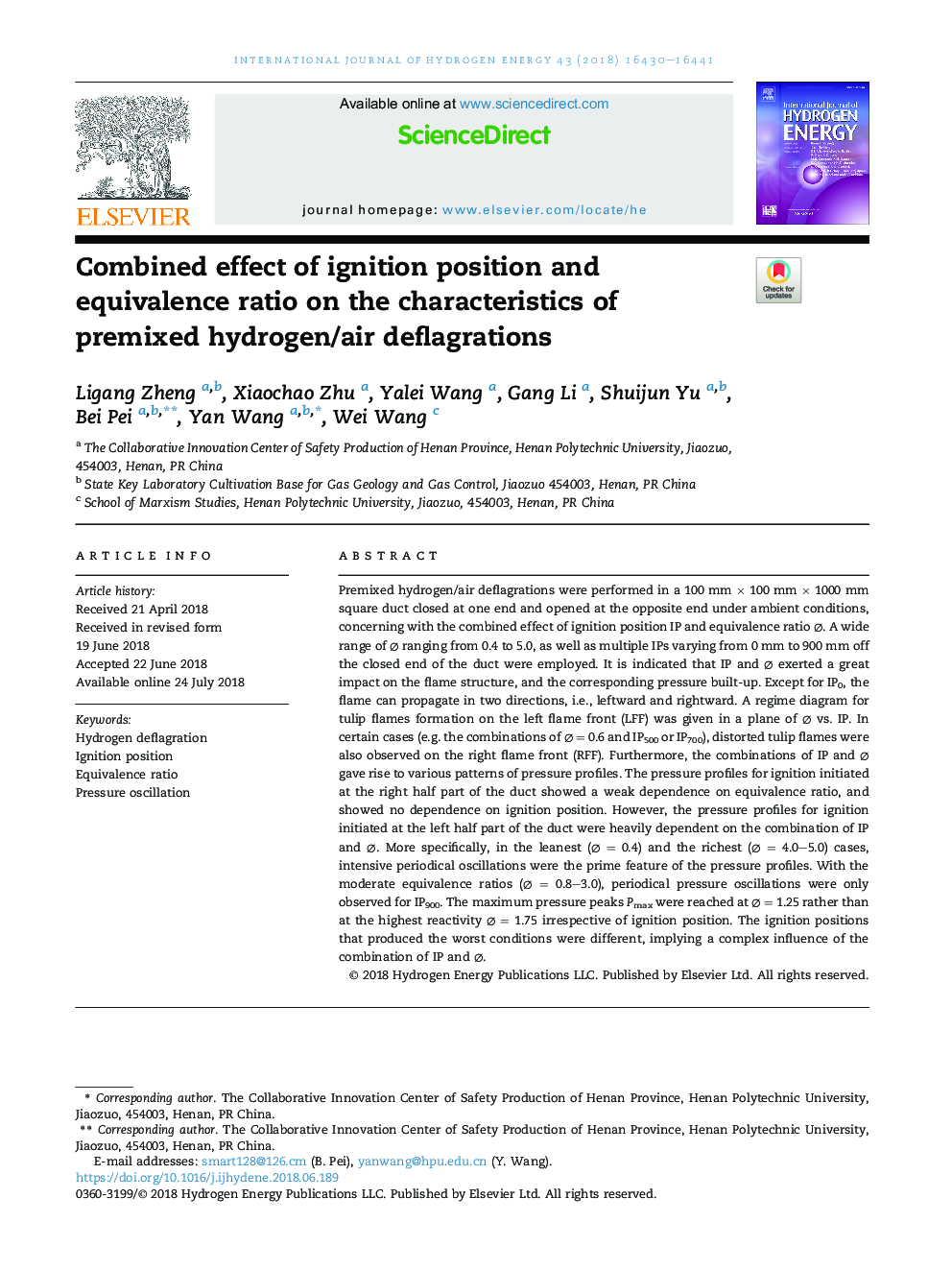| Article ID | Journal | Published Year | Pages | File Type |
|---|---|---|---|---|
| 8961325 | International Journal of Hydrogen Energy | 2018 | 12 Pages |
Abstract
Premixed hydrogen/air deflagrations were performed in a 100 mm Ã 100 mm Ã 1000 mm square duct closed at one end and opened at the opposite end under ambient conditions, concerning with the combined effect of ignition position IP and equivalence ratio â
. A wide range of â
ranging from 0.4 to 5.0, as well as multiple IPs varying from 0Â mm to 900Â mm off the closed end of the duct were employed. It is indicated that IP and â
exerted a great impact on the flame structure, and the corresponding pressure built-up. Except for IP0, the flame can propagate in two directions, i.e., leftward and rightward. A regime diagram for tulip flames formation on the left flame front (LFF) was given in a plane of â
vs. IP. In certain cases (e.g. the combinations of â
 = 0.6 and IP500 or IP700), distorted tulip flames were also observed on the right flame front (RFF). Furthermore, the combinations of IP and â
gave rise to various patterns of pressure profiles. The pressure profiles for ignition initiated at the right half part of the duct showed a weak dependence on equivalence ratio, and showed no dependence on ignition position. However, the pressure profiles for ignition initiated at the left half part of the duct were heavily dependent on the combination of IP and â
. More specifically, in the leanest (â
 = 0.4) and the richest (â
 = 4.0-5.0) cases, intensive periodical oscillations were the prime feature of the pressure profiles. With the moderate equivalence ratios (â
 = 0.8-3.0), periodical pressure oscillations were only observed for IP900. The maximum pressure peaks Pmax were reached at â
 = 1.25 rather than at the highest reactivity â
 = 1.75 irrespective of ignition position. The ignition positions that produced the worst conditions were different, implying a complex influence of the combination of IP and â
.
Related Topics
Physical Sciences and Engineering
Chemistry
Electrochemistry
Authors
Ligang Zheng, Xiaochao Zhu, Yalei Wang, Gang Li, Shuijun Yu, Bei Pei, Yan Wang, Wei Wang,
